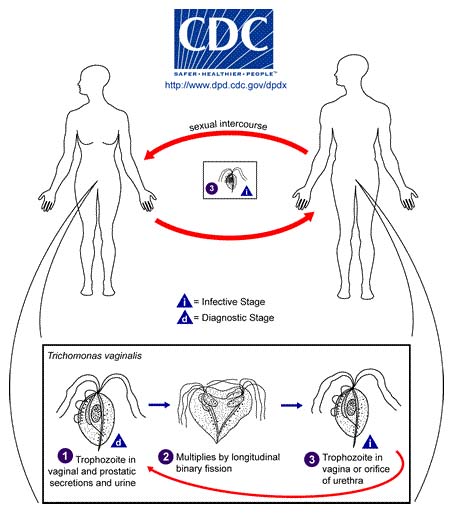Trichomoniasis pathophysiology
|
Trichomoniasis Microchapters |
|
Diagnosis |
|
Treatment |
|
Case Studies |
|
Trichomoniasis pathophysiology On the Web |
|
American Roentgen Ray Society Images of Trichomoniasis pathophysiology |
|
Risk calculators and risk factors for Trichomoniasis pathophysiology |
Editor-In-Chief: C. Michael Gibson, M.S., M.D. [1]
Pathophysiology
Trichomoniasis is caused by the single-celled protozoan parasite, Trichomonas vaginalis. The vagina is the most common site of infection in women, and the urethra (urine canal) is the most common site of infection in men. The parasite is sexually transmitted through penis-to-vagina intercourse or vulva-to-vulva (the genital area outside the vagina) contact with an infected partner. Women can acquire the disease from infected men or women, but men usually contract it only from infected women. [2][3]
Life Cycle
Trichomonas vaginalis resides in the female lower genital tract and the male urethra and prostate 1, where it replicates by binary fission 2. The parasite does not appear to have a cyst form, and does not survive well in the external environment. Trichomonas vaginalis is transmitted among humans, its only known host, primarily by sexual intercourse 3.

Molecular Biology
A draft sequence of the Trichomoniasis genome was published on January 12, 2007 in the journal Science confirming that the genome has at least 26,000 genes, a similar number to the human genome.[4]